The Influence of Galvanizing on the Surface Quality and Part Precision of S235J0 Alloy Machined by Turning
Abstract
:1. Introduction
- Study the influence of surface roughness processed by turning on the quality of the surface obtained by galvanizing.
- Study the influence of galvanizing technology on the dimensional accuracy of the landmarks.
- Track the thickness and quality of the zinc layer through the prism of its resistance to corrosion depending on the galvanizing technology.
- We provide a new way to approach the research by analyzing the galvanizing technologies available on the market in the context of their use in the industry.
- The experimental data are interpreted using many criteria from the point of view of the size of the part after galvanizing, the quality of the surface, and the corrosion resistance of each studied surface.
- We consider the possibility to anticipate the roughness obtained after galvanizing.
2. Research Methodology
- Lathe body: PVJBR2020K11 (Walter) (ISO 2936-2).
- Cutting insert: VBMT110308-FP6, WPP20S (Walter Tiger tec).
- Length of the insert: 11 mm;
- Width of the insert: 3 mm;
- Thickness of the insert: 8 mm;
- Chip breaker code: FP6;
- Coating type: WPP20S.
- Rake angle (γ): 0°;
- Clearance angle (α): 7°;
- Cutting angle (β): 80°.
- Degreasing and washing in an alkaline solution. The solution used was Ferro clean 7135/1.
- ○
- Features of the washroom:
- ▪
- Temperature: 50 °C;
- ▪
- PH: 6.1;
- ▪
- Bubbling with compressed air.
- ○
- Holding time: 15 min.
- Water rinse.
- ○
- Holding time: 10 min; compressed air bubbling.
- Pickling. It was carried out in a hydrochloric acid bath.
- ○
- Pickling bath characteristics:
- ▪
- Temperature: 25 °C;
- ▪
- Bath concentration: 29%.
- ○
- Holding time: 20 min.
- Water rinse.
- ○
- Holding time: 10 min; compressed air bubbling.
- Fluxing (preparation of the galvanizing surface and anti-corrosion protection during the drying of the part) was carried out in the basin by immersion. The solution used is based on zinc chloride (Zinc chloride (ZnCl2)).
- ○
- Bathroom features:
- ▪
- Temperature: 45 °C;
- ▪
- PH: 4.0;
- ▪
- No bubbling.
- ○
- Holding time: 5 min.
- Drying was carried out in a closed heated enclosure with indoor air recirculation.
- ○
- Characteristics of the dryer:
- ▪
- Temperature: 80 °C;
- ▪
- Air recirculation.
- ○
- Holding time: 40 min.
- Immersion in molten zinc.
- Galvanized pool temperature: 550 °C for hot dip galvanized parts only.
- ○
- Temperature of the galvanizing pool: 600 °C for hot dip galvanized parts with centrifugation;
- ○
- Holding time: 5 min.
- Centrifugation was used for hot dip galvanized samples with immersion and centrifugation.
- Passivation and oxidation were achieved in a water bath by immersion. Holding time: about 1–2 min.
- Degreasing and washing in an alkaline solution. The solution used was made from AK16 + RV111 compounds.
- ○
- Temperature: 60 °C;
- ○
- Bubbling with compressed air;
- ○
- Holding time: 10 min.
- Washing in the basin with water and bubbling with compressed air.
- ○
- Temperature: 20 °C;
- ○
- Holding time: 0.5 min.
- Pickling was carried out in a hydrochloric acid (HCl) + BEF30 bath.
- ○
- Temperature: 25 °C;
- ○
- Holding time: 5 min.
- Electrolytic and anodic degreasing were used (anodic cleaning). The solution used was made of E1-DEG.
- ○
- Temperature: 25 °C;
- ○
- Holding time: 4 min.
- Zinc plating was carried out in an alkaline solution made with Slotonit OT.
- ○
- Maintenance time: 30 min;
- ○
- Temperature: 20–25 °C;
- ○
- pH: 5–5.5;
- ○
- Current intensity: 1.5–2 A;
- ○
- Current voltage: 100 V.
- Passivation was carried out in a solution made with Slatopas Z20Blue and nitric acid.
- ○
- Holding time: 1 min;
- ○
- Temperature: 20–25 °C;
- ○
- pH: 1.7–2.
- The drying chamber had a controlled environment.
- ○
- The temperature has circulated: 50 °C;
- ○
- Maintenance time: 10 min.
3. Performing Measurements
- Temperature: 35 °C;
- Concentration of saline solution: 50 gr/L;
- Salt used: NaCl;
- Flow of saline solution: 1.5 mL/h.
4. Processing and Interpretation of Experimental Data
- S1, S2, and S3—hot dip galvanized only;
- S4, S5, and S6—hot dip galvanized with immersion and centrifugation;
- S7, S8, and S9—galvanized.
- Repeatability of the measuring arm;
- Calibration uncertainty of the measuring arm;
- Operator influence;
- Environmental factors (such as temperature, vibration, etc.).
5. Results
- A total of 99.28% of the variability in HDG—Ra (µm).
- A total of 98.71% of the variability in HDGC—Ra (µm).
- A total of 97.55% of the variability in ZE—Ra (µm).
- A total of 99.51% of the variability during turning—Ra (µm).
6. Discussion
- depending on the quality of the surface before galvanizing and
- depending on the galvanizing technology used,
- Ra < 3.657 μm—in the case of HDG;
- Ra < 3.344 μm—in the case of HDG+C;
- Ra > 2.928 μm—in the case of ZP (because after the deposition of the zinc layer by electrolysis, the roughness of the surfaces decreases).
- To obtain a given dimension after galvanizing, the parts, depending on the galvanizing technology, will be turned with smaller dimensions with:
- 0.16 mm/diameter (0.08 mm/radius) in the case of HDG;
- 0.09 mm/diameter (0.047 mm/radius) in the case of HDG+C;
- 0.03 mm/diameter (0.014 mm/radius) in the case of ZP.
- From the point of view of dimensional accuracy, it was found that it decreases after galvanizing. The changes in the tolerance field depending on the galvanizing technology are:
- +0.01 mm in the case of HDG;
- +0.001 mm in the case of HDG+C;
- +0.01 mm in the case of ZP.
- Degradation of the zinc layer appears, as expected;
- Rust does not appear, the steel part is protected from corrosion regardless of the galvanizing technology;
- The degradation of the zinc layer is more advanced in the case of sections with less roughness. Zinc plating on the surfaces of sections with Ra = 0.68–2.49 shows a more pronounced degradation compared to that of the sections with roughness Ra = 3.64–5.72.
7. Conclusions
Author Contributions
Funding
Institutional Review Board Statement
Informed Consent Statement
Data Availability Statement
Conflicts of Interest
References
- Feldmann, M.; Pinger, T.; Schäfer, D.; Pope, R.; Smith, W.; Sedlacek, G. Hot-Dip-Zinc-Coating of Prefabricated Structural Steel Components; JRC Scientific and Technical Reports; European Commission: Brussels, Belgium, 2010; pp. 13–14. [Google Scholar]
- Saarimaa, V.; Lange, C.; Paunikallio, T.; Kaleva, A.; Nikkanen, J.-P.; Levänen, E.; Väisänen, P.; Markkula, A. Evaluation of surface activity of hot-dip galvanized steel after alkaline cleaning. J. Coat. Technol. Res. 2020, 17, 285–292. [Google Scholar] [CrossRef]
- Cook, T.H. Composition, testing, and control of hot dip galvanizing flux. Met. Finish. 2003, 101, 22–35. [Google Scholar] [CrossRef]
- Morikubo, S.; Yukio, K.; Daisuke, E.; Aoi, N.; Yasuhiko, T. Effect of ammonia stripping and influence of contaminants in zinc plating wastewater. J. Environ. Manag. 2021, 298, 113459. [Google Scholar] [CrossRef]
- Chotirach, M.; Rattanawaleedirojn, P.; Boonyongmaneerat, Y.; Chanajaree, R.; Schmid, K.; Metzner, M.; Rodthongkum, N. Systematic investigation of brightener’s effects on alkaline non-cyanide zinc electroplating using HPLC and molecular modeling. Mater. Chem. Phys. 2022, 277, 125567. [Google Scholar] [CrossRef]
- Li, C.; Kingsbury, R.; Zhou, L.; Shyamsunder, A.; Persson, K.A.; Nazar, L.F. Tuning the solvation structure in aqueous zinc batteries to maximize Zn-ion intercalation and optimize dendrite-free zinc plating. ACS Energy Lett. 2022, 7, 533–540. [Google Scholar] [CrossRef]
- Wang, Y.; Chen, Y.; Liu, W.; Ni, X.; Qing, P.; Zhao, Q.; Wei, W.; Ji, X.; Ma, J.; Chen, L. Uniform and dendrite-free zinc deposition enabled by in situ formed AgZn 3 for the zinc metal anode. J. Mater. Chem. A 2021, 9, 8452–8461. [Google Scholar] [CrossRef]
- Li, H.; Jia, W.; Chen, P.; Wang, L.; Yan, X.; Yang, Y.Y. Zinc Deposition Characteristics on Different Substrates for Aqueous Zinc Ion Battery. Appl. Surf. Sci. 2023, 607, 155111. [Google Scholar] [CrossRef]
- Kania, H.; Mendala, J.; Kozuba, J.; Saternus, M. Development of Bath Chemical Composition for Batch Hot-Dip Galvanizing—A Review. Materials 2020, 13, 4168. [Google Scholar] [CrossRef]
- Tayyebi, K.; Sun, M.; Karimi, K. Residual stresses of heat-treated and hot-dip galvanized RHS cold-formed by different methods. J. Constr. Steel Res. 2020, 169, 106071. [Google Scholar] [CrossRef]
- Yu, Z.; Hu, J.; Meng, H. A review of recent developments in coating systems for hot-dip galvanized steel. Front. Mater. 2020, 7, 74. [Google Scholar] [CrossRef] [Green Version]
- Peng, S.; Xie, S.K.; Xiao, F.; Lu, J.T. Corrosion behavior of spangle on a batch hot-dip galvanized Zn-0.05 Al-0.2 Sb coating in 3.5 wt.% NaCl solution. Corros. Sci. 2020, 163, 108237. [Google Scholar] [CrossRef]
- Al-Negheimish, A.; Hussain, R.R.; Alhozaimy, A.; Singh, D.D.N. Corrosion performance of hot-dip galvanized zinc-aluminum coated steel rebars in comparison to the conventional pure zinc coated rebars in concrete environment. Constr. Build. Mater. 2021, 274, 121921. [Google Scholar] [CrossRef]
- Sun, M.; Ma, Z. Effects of heat-treatment and hot-dip galvanizing on mechanical properties of RHS. J. Constr. Steel Res. 2019, 153, 603–617. [Google Scholar] [CrossRef]
- Hu, S.; Xu, C.; Srinivasakannan, C.; Tan, X.; Ni, S.; Zhang, J.; Li, X.; Zhang, H.; Li, S. Recovery of zinc and iron from hot-dip galvanizing spent pickle liquor using solvent extraction. J. Mol. Liq. 2022, 362, 119741. [Google Scholar] [CrossRef]
- Hernández-Betancur, J.D.; Hernández, H.F.; Ocampo-Carmona, L.M. A holistic framework for assessing hot-dip galvanizing process sustainability. J. Clean. Prod. 2019, 206, 755–766. [Google Scholar] [CrossRef]
- Meeusen, M.; Zardet, L.; Homborg, A.M.; Lekka, M.; Andreatta, F.; Fedrizzi, L.; Boelen, B.; Mol, J.M.C.; Terryn, H. The effect of time evolution and timing of the electrochemical data recording of corrosion inhibitor protection of hot-dip galvanized steel. Corros. Sci. 2020, 173, 108780. [Google Scholar] [CrossRef]
- Najafabadi, E.P.; Heidarpour, A.; Raina, S. Hot-dip galvanizing of high and ultra-high strength thin-walled CHS steel tubes: Mechanical performance and coating characteristics. Thin-Walled Struct. 2021, 164, 107744. [Google Scholar] [CrossRef]
- Cetinkaya, B.W.; Junge, F.; Mueller, G.; Haakmann, F.; Schierbaum, K.; Giza, M. Impact of alkaline and acid treatment on the surface chemistry of a hot-dip galvanized Zn–Al–Mg coating. J. Mater. Res. Technol. 2020, 9, 16445–16458. [Google Scholar] [CrossRef]
- Scheiber, D.; Essl, W.; Strutzenberger, J.; Goodwin, F.; Spitaler, J.; Reiss, G. Morphology of Fe2Al5 particles and the interface to WC coating in the context of hot-dip galvanizing: An ab initio study. J. Alloys Compd. 2020, 824, 153854. [Google Scholar] [CrossRef]
- Fan, Y.; Yang, H.; Fan, H.; Liu, Q.; Lv, C.; Zhao, X.; Yang, M.; Wu, J.; Cao, X. Corrosion resistance of modified hexagonal boron nitride (h-BN) nanosheets doped acrylic acid coating on hot-dip galvanized steel. Materials 2020, 13, 2340. [Google Scholar] [CrossRef]
- Xu, Y.; Zhang, Y.; Shu, Y.; Song, H.; Shu, X.; Ma, Y.; Hao, L.; Zhang, X.; Ren, X.; Wang, Z.; et al. Composition and Leaching Toxicity of Hydrochloric Acid Pickling Sludge Generated from the Hot-Dip Galvanized Steel Industry. ACS Omega 2022, 7, 13826–13840. [Google Scholar] [CrossRef] [PubMed]
- Comparini, A.; Del Pace, I.; Giurlani, W.; Emanuele, R.; Verrucchi, M.; Bonechi, M.; Innocenti, M. Electroplating on Al6082 Aluminium: A New Green and Sustainable Approach. Coatings 2023, 13, 13. [Google Scholar] [CrossRef]
- Liu, P.; Wang, S.; Wang, C.; Zhao, X. Study on Microstructure and Properties of Mechanically Deposited Zn-Sn Coating. Coatings 2022, 12, 1919. [Google Scholar] [CrossRef]
- Jiang, W.; Liu, Y.; Wang, J.; Li, R.; Liu, X.; Ai, S. Facile and Eco-Friendly Preparation of Mild Steel Based Superhydrophobic Surfaces without Chemical Modifications. Coatings 2022, 12, 737. [Google Scholar] [CrossRef]
- Nunes, M.S.; Bandeira, R.M.; Figueiredo, F.C.; dos Santos Junior, J.R.; de Matos, J.M.E. Corrosion protection of stainless steel by a new and low-cost organic coating obtained from cashew nutshell liquid. J. Appl. Polym. Sci. 2023, 140, e53420. [Google Scholar] [CrossRef]
- Selles, M.A.; Schmid, S.R.; Sanchez-Caballero, S.; Perez-Bernabeu, E.; Reig, M.J. Upper-bound modelization of an ironed three-layered polymer-coated steel strip. Int. J. Adv. Manuf. Technol. 2012, 60, 161–171. [Google Scholar] [CrossRef]
- Selles, M.A.; Schmid, S.R.; Seguí, V.J. Ironability of a three-layered polymer-coated steel. Part 1: Experimental investigation. J. Mater. Process. Technol. 2008, 202, 7–14. [Google Scholar] [CrossRef]
- Min, T.; Gao, Y.; Huang, X.; Gong, Z.; Li, K.; Ma, S. Effects of aluminum concentration on the formation of inhibition layer during hot-dip galvanizing. Int. J. Heat Mass Transf. 2018, 127, 394–402. [Google Scholar] [CrossRef]
- Yang, T.C.; Chin, T.S.; Chang, J.K.; Lin, C.S. Oxidation resistance of Al2O3/SiO2 nanocomposite coating on hot-dip galvanized steel deposited by chemical immersion and sol-gel coating. Surf. Coat. Technol. 2020, 404, 126457. [Google Scholar] [CrossRef]
- Lipiäinen, K.; Ahola, A.; Kaijalainen, A.; Björk, T. Fatigue performance and the effect of manufacturing quality on the uncoated and hot-dip galvanized ultra-high-strength steel laser cut edges. Int. J. Fatigue 2022, 164, 107127. [Google Scholar] [CrossRef]
- Kumar, R.; Hynes, N.R.J. Prediction and optimization of surface roughness in thermal drilling using integrated ANFIS and GA approach. Eng. Sci. Technol. Int. J. 2020, 23, 30–41. [Google Scholar] [CrossRef]
- Pramanik, A.; Islam, M.N.; Basak, A.K.; Dong, Y.; Littlefair, G.; Prakash, C. Optimizing dimensional accuracy of titanium alloy features produced by wire electrical discharge machining. Mater. Manuf. Process. 2019, 34, 1083–1090. [Google Scholar] [CrossRef]


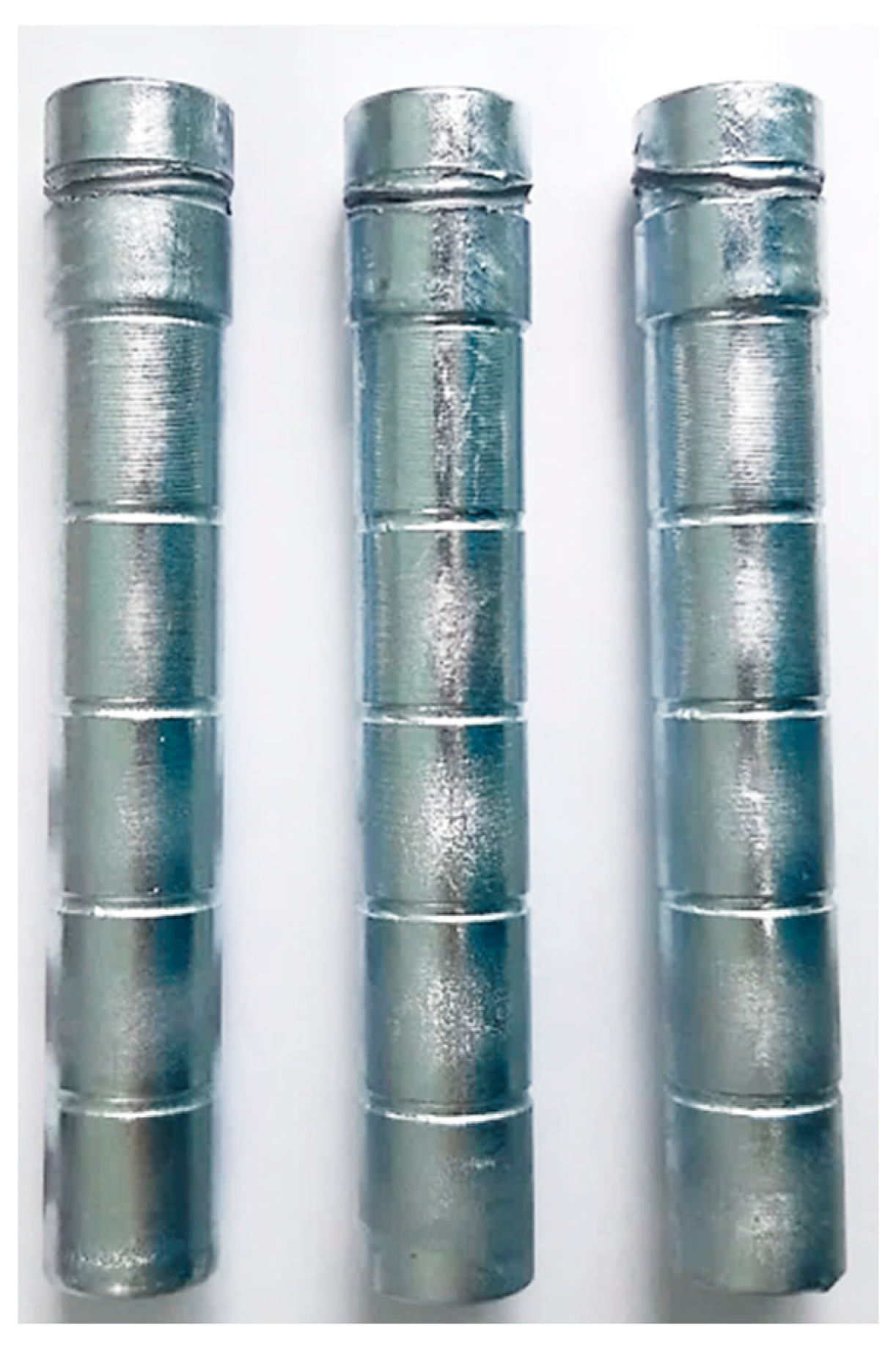
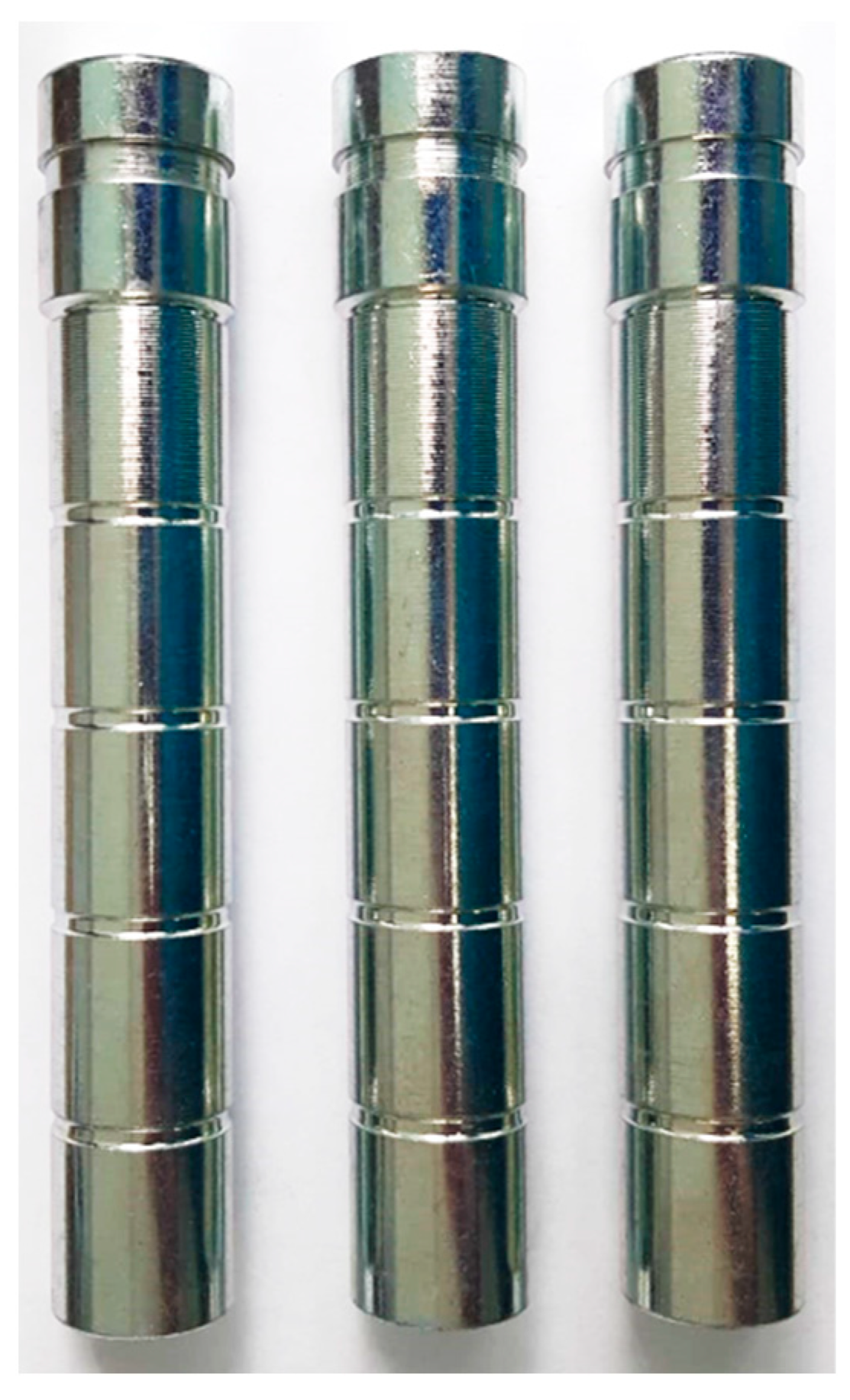
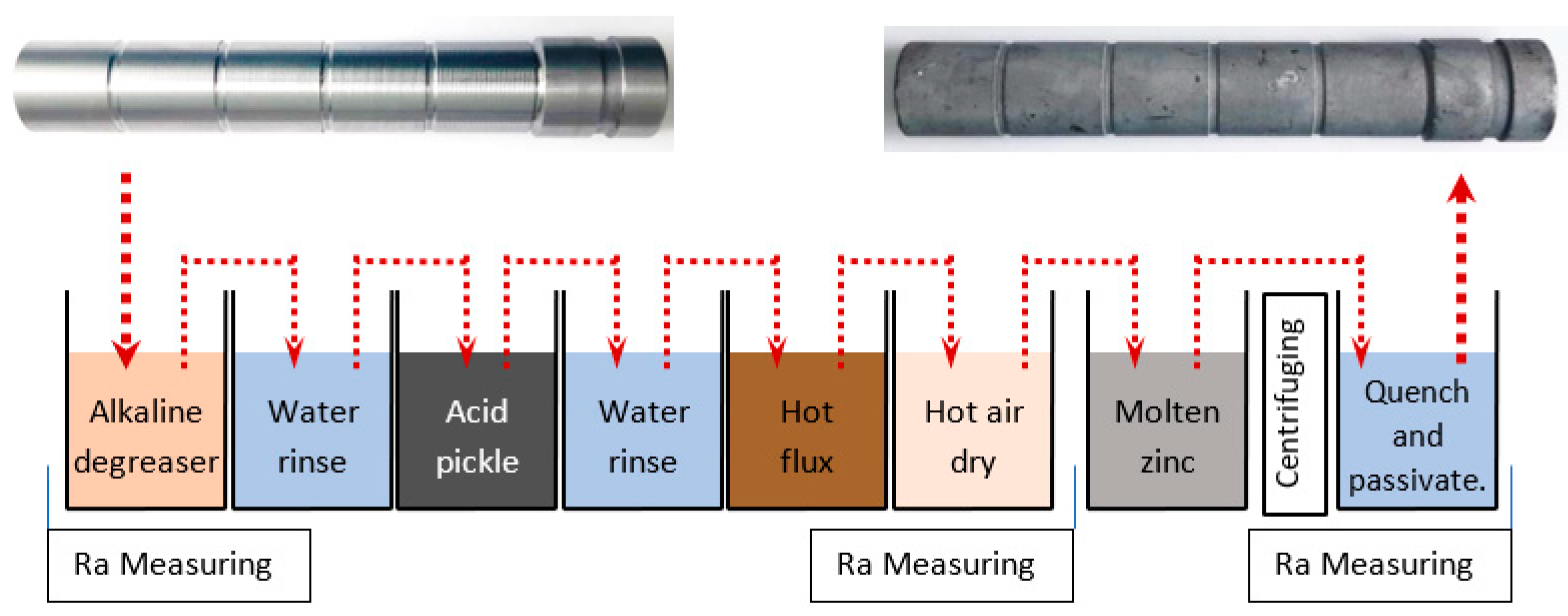
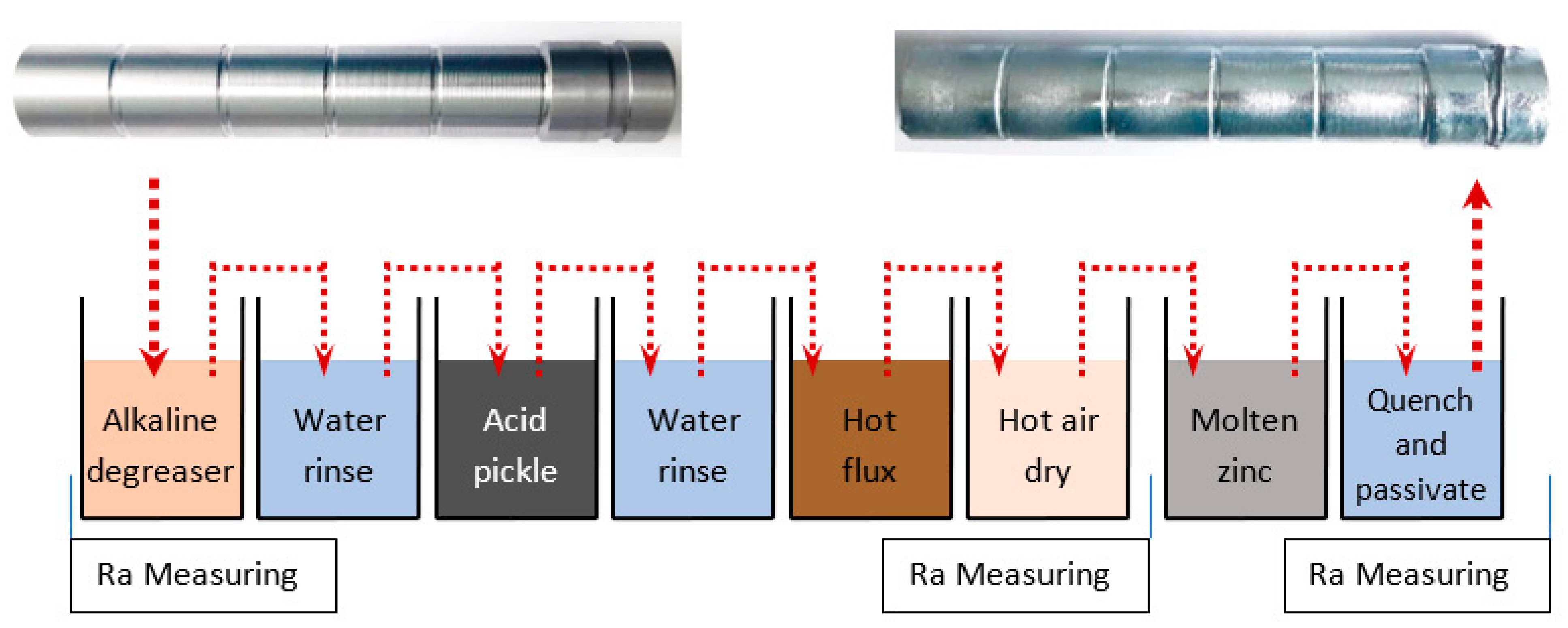
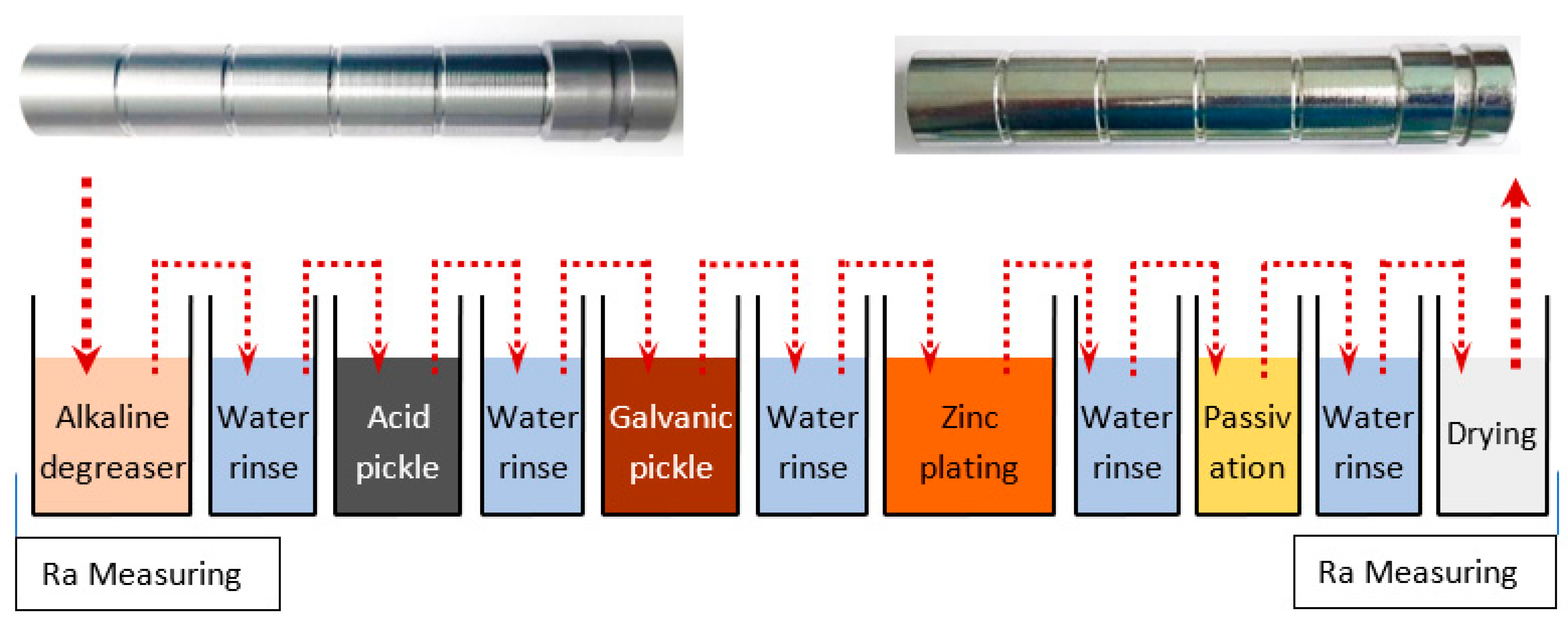
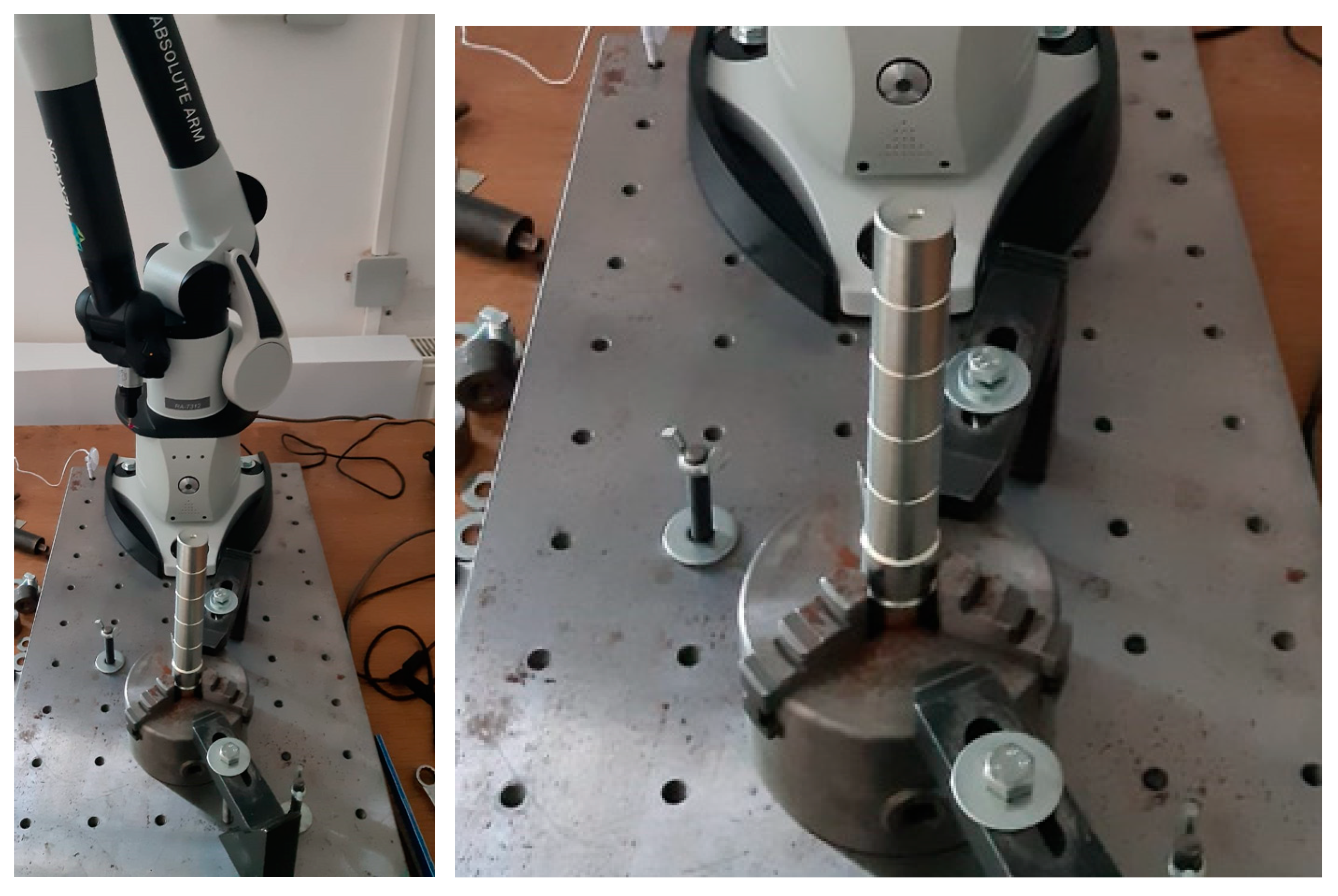
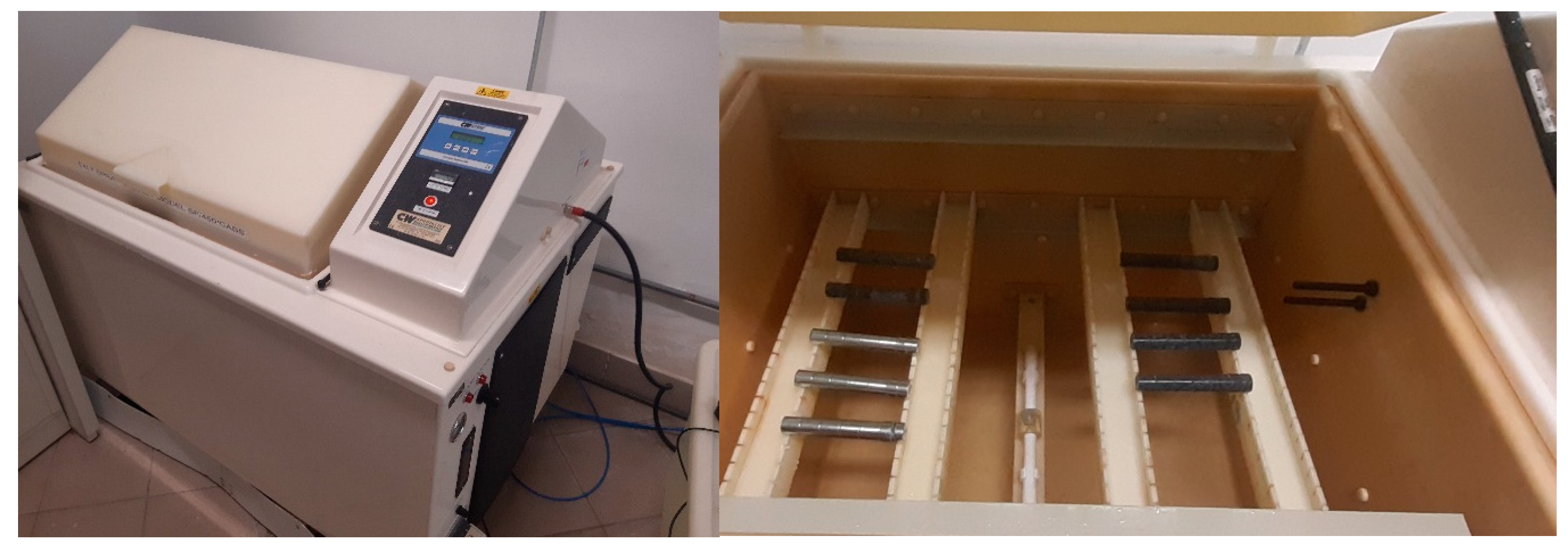
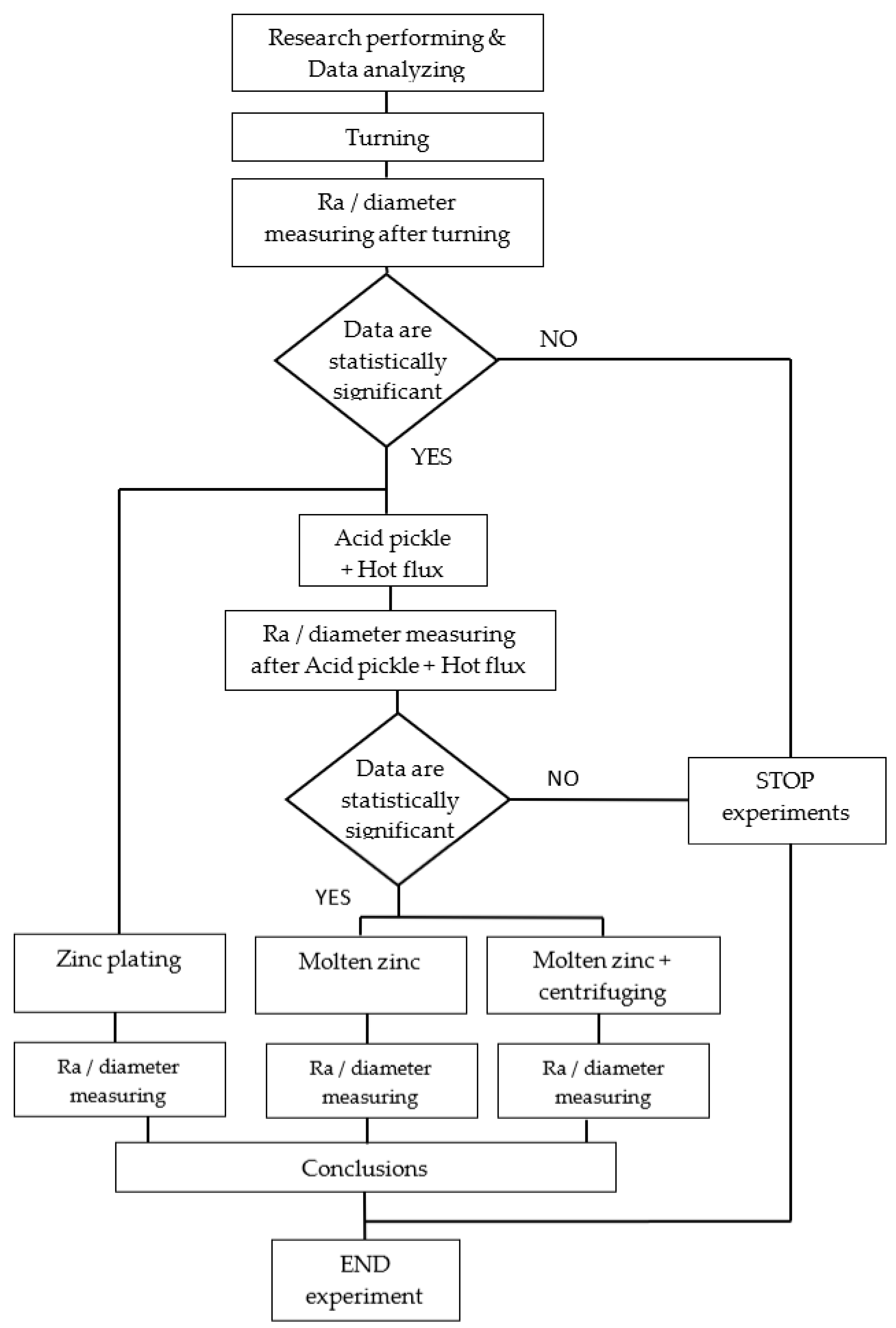


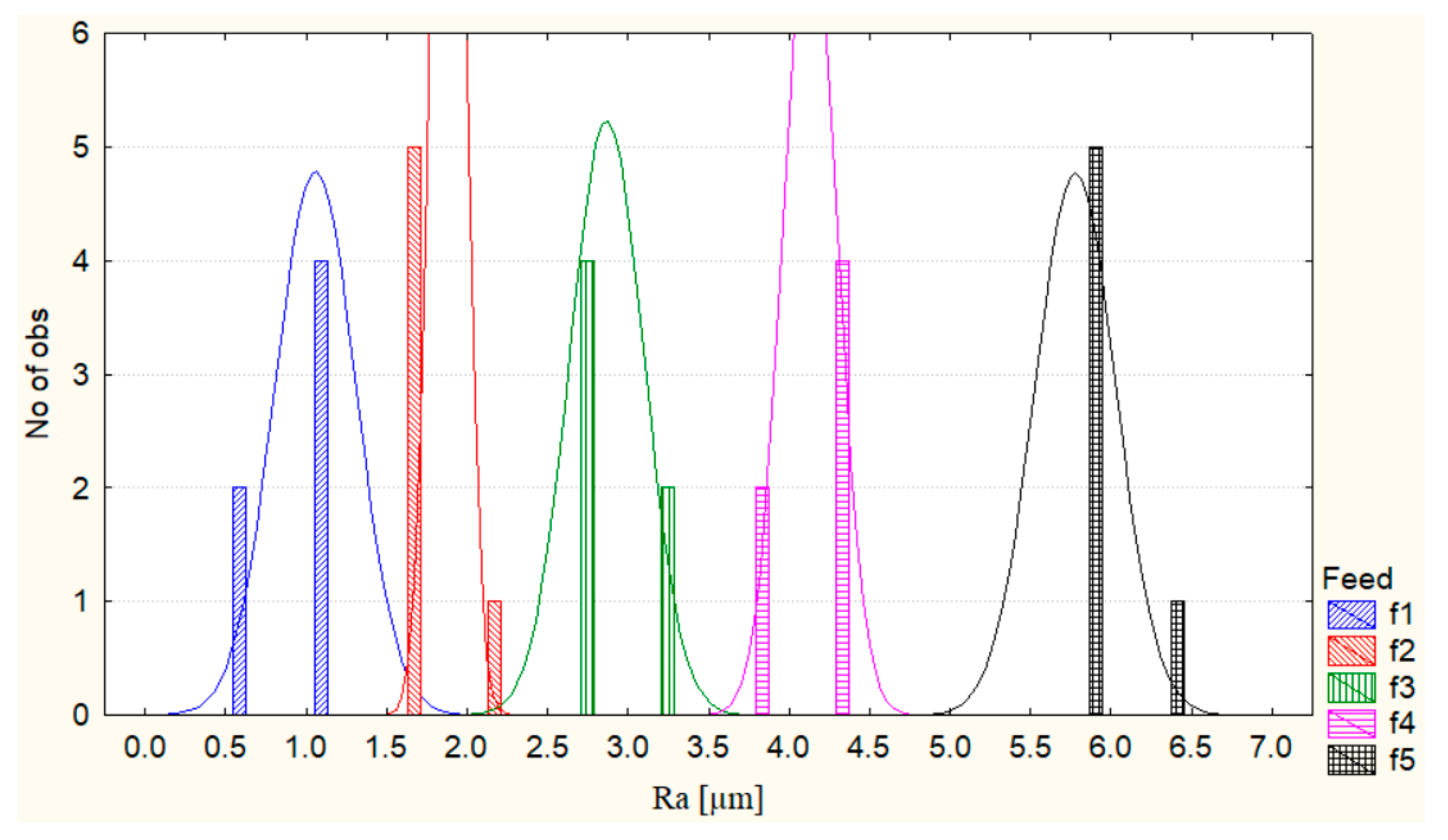

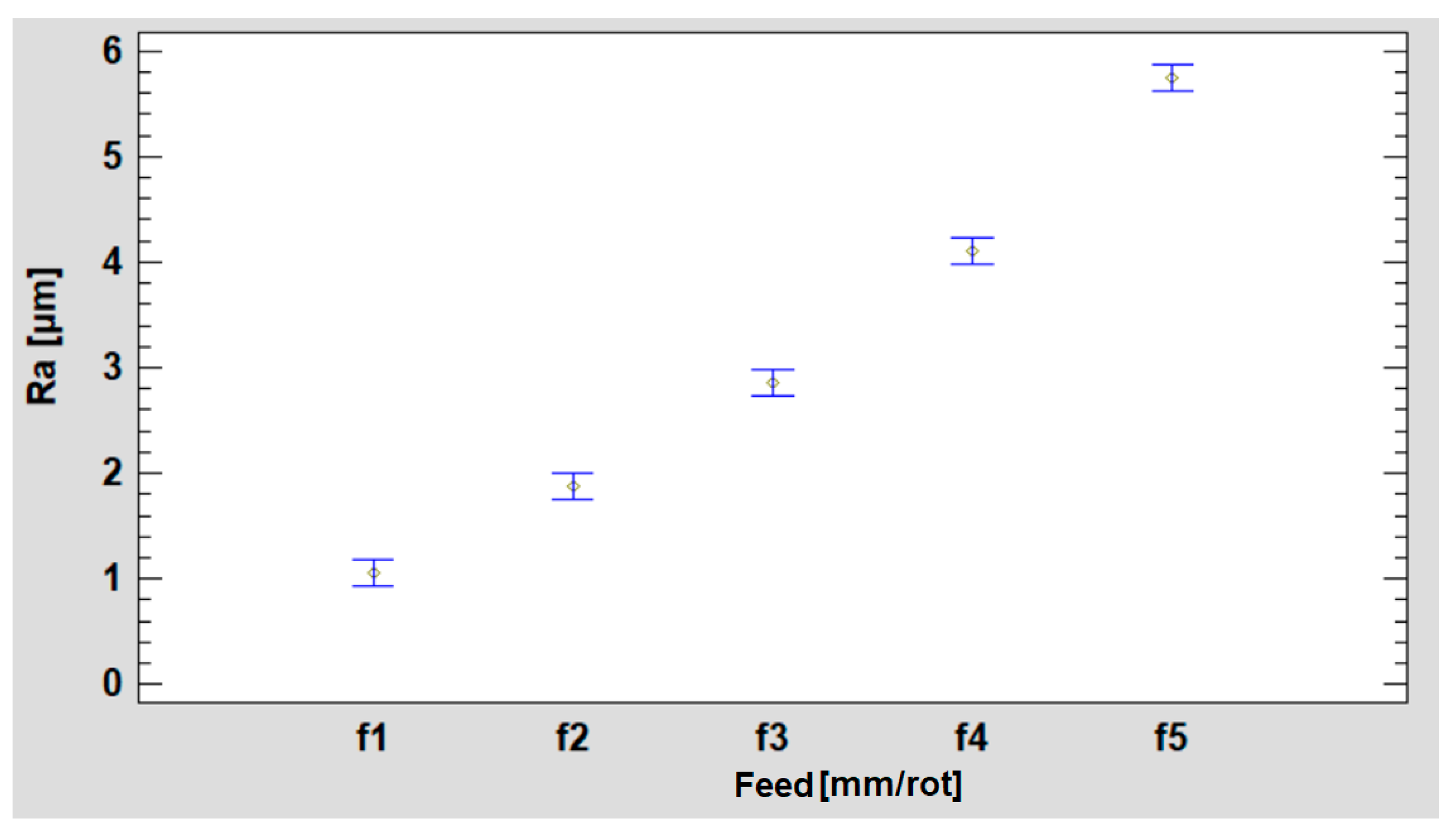
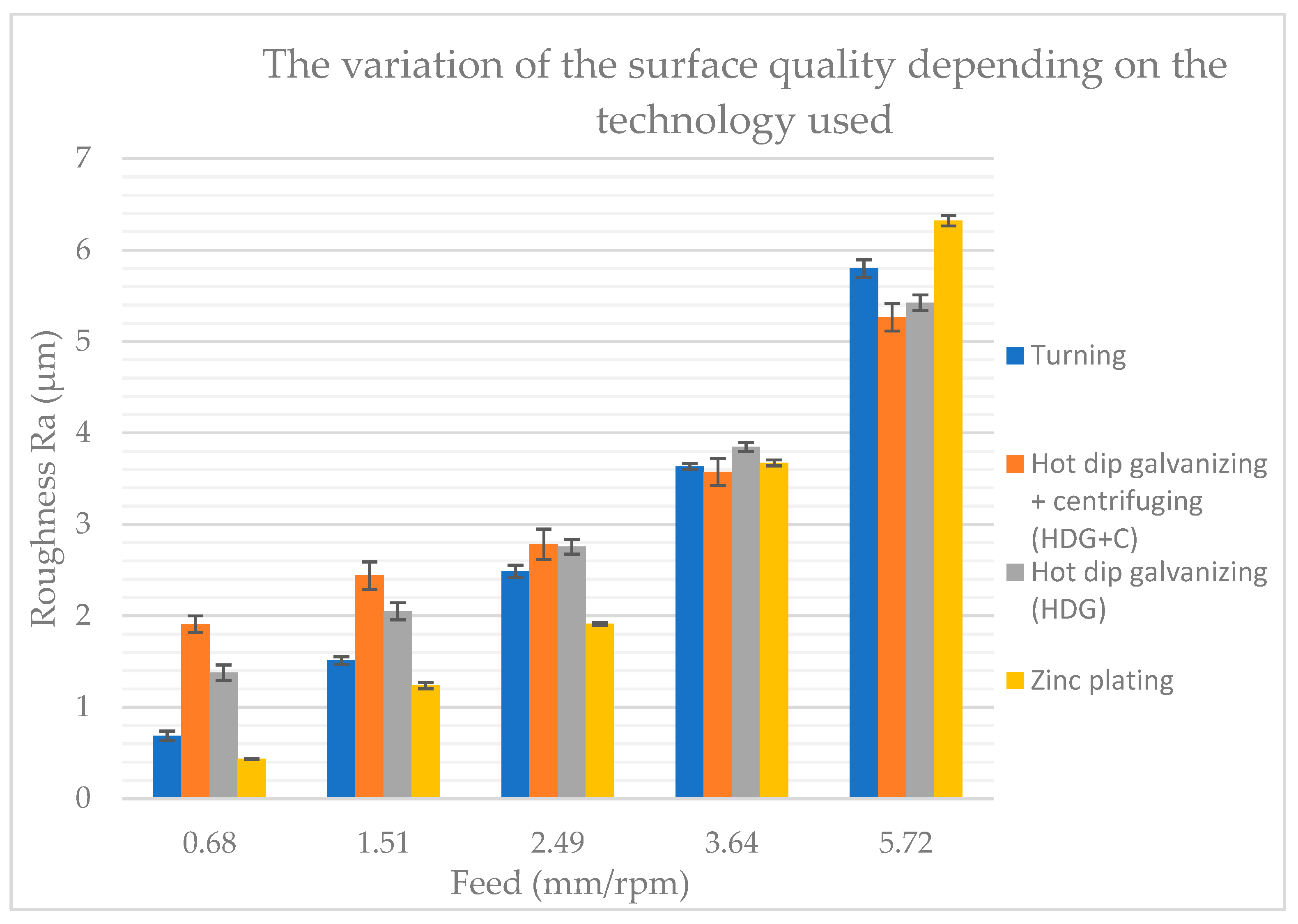
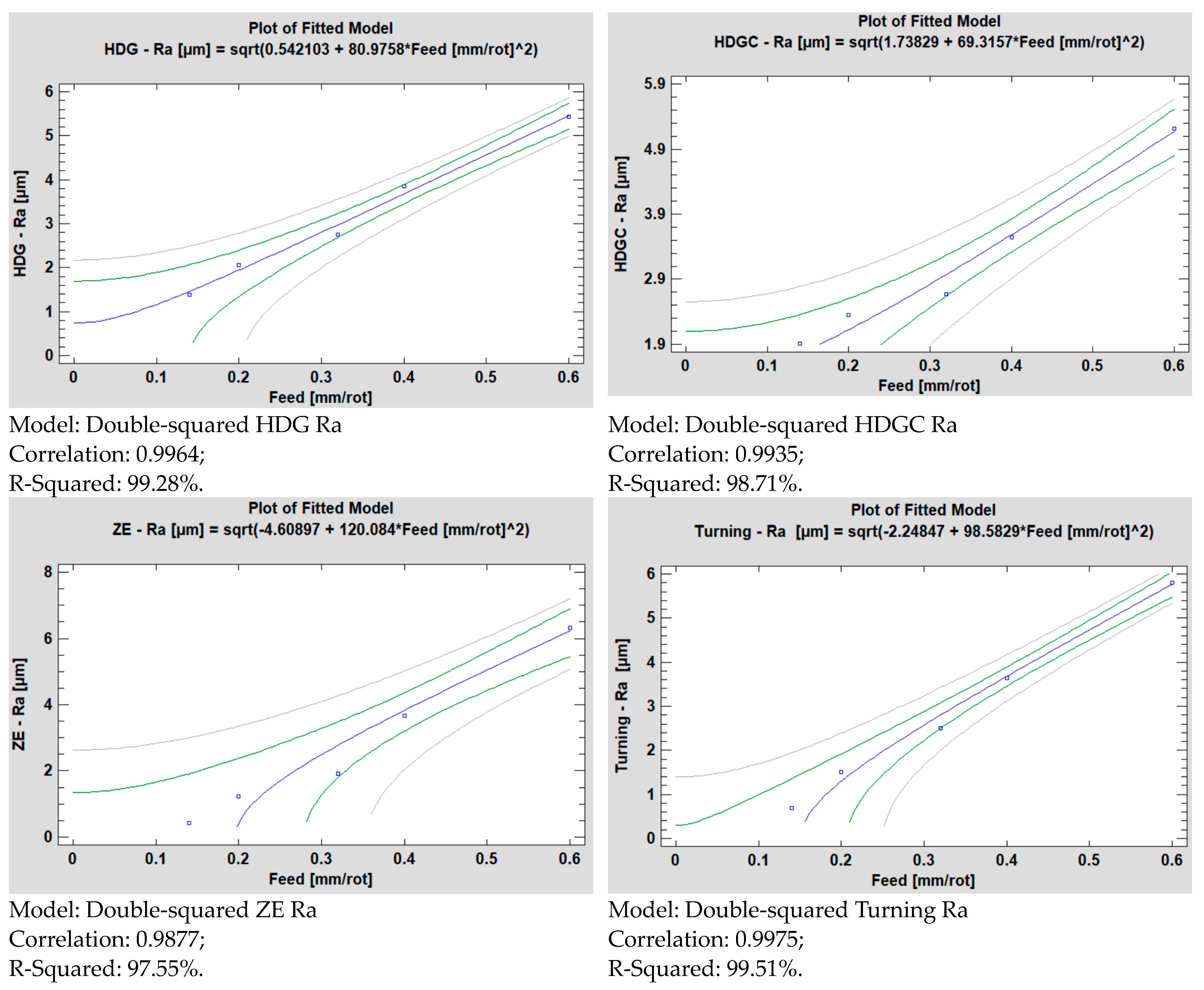

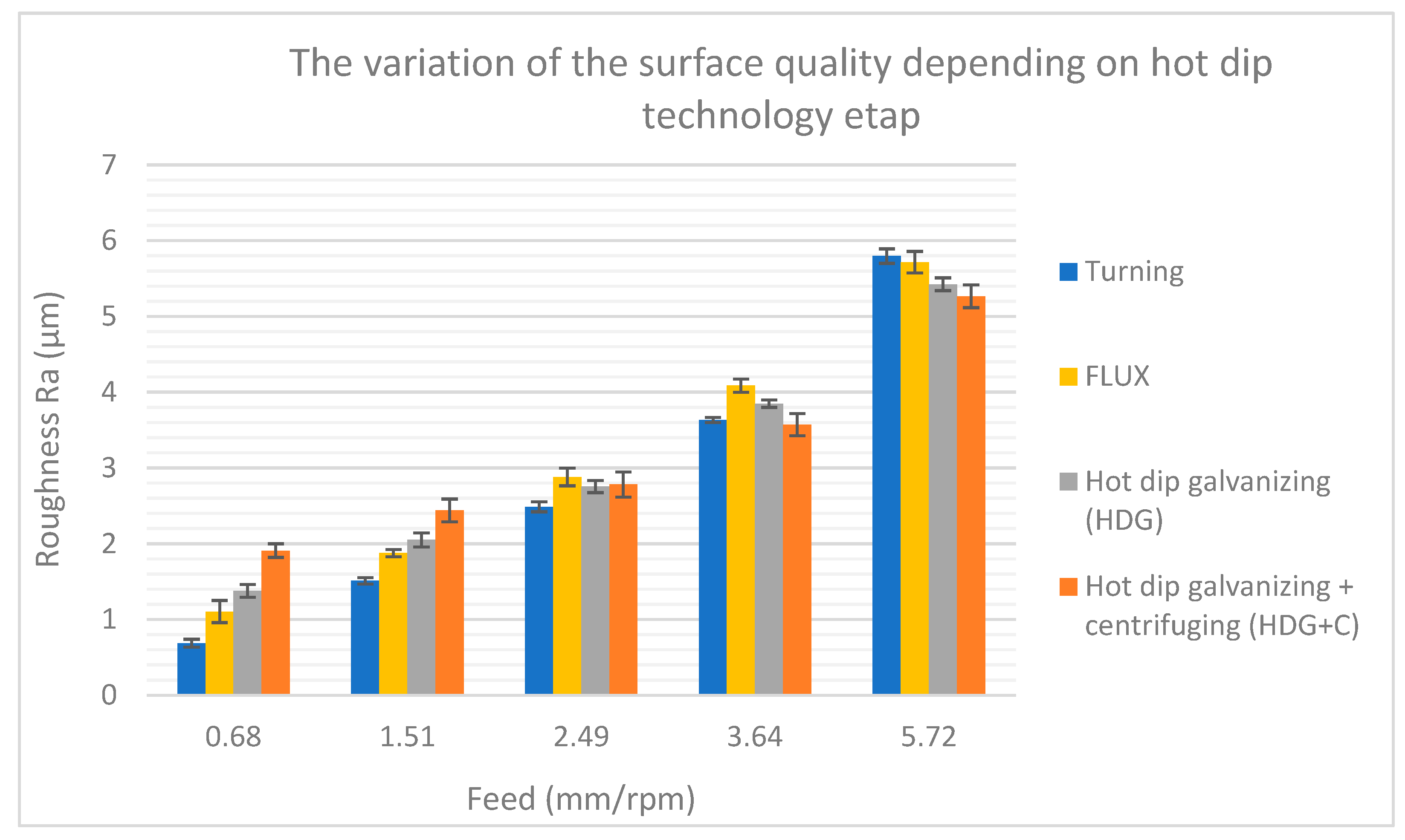
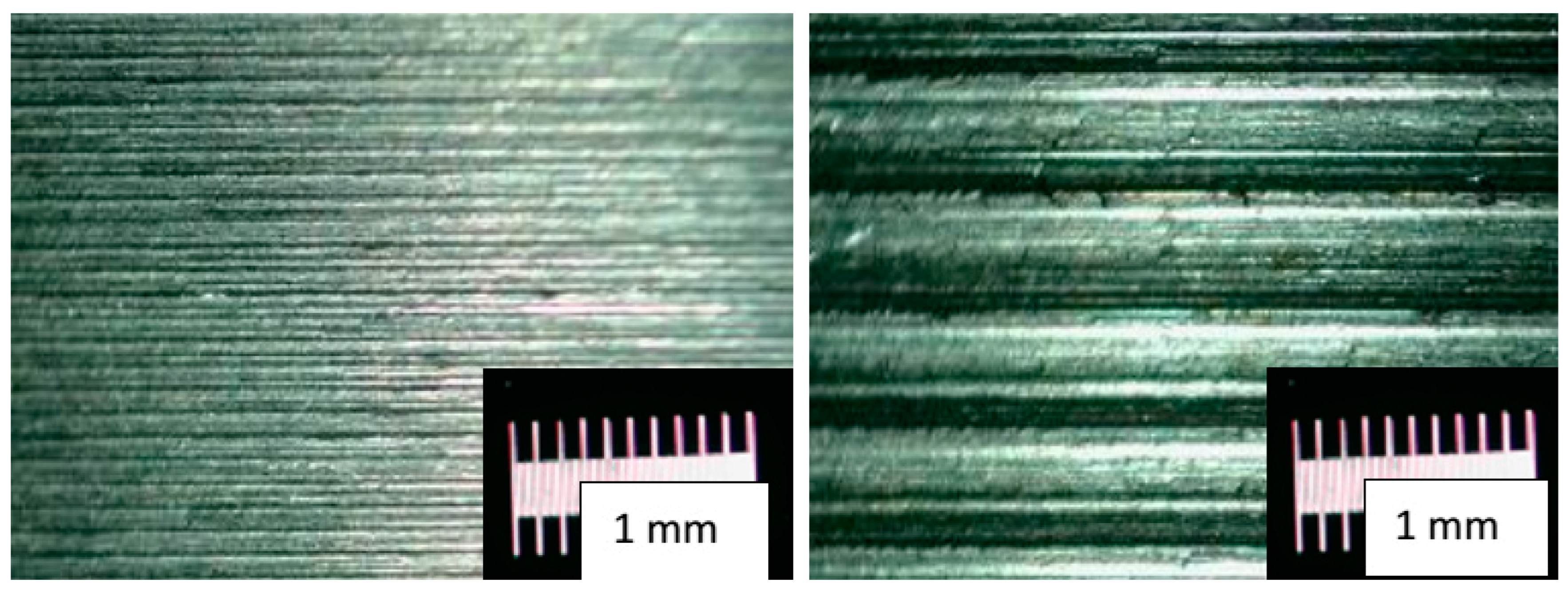
| Spindle Speed (rpm) | Feed (mm/rot) | Desired Roughness after Turning Ra (µm) | Average Roughness Obtained after Turning Ra (µm) | Part Section |
|---|---|---|---|---|
| 1800 | 0.14 | 0.8—specific to the finish | 0.684 | 5 |
| 0.2 | 1.6—specific to the finish | 1.512 | 4 | |
| 0.32 | 2.5 | 2.488 | 3 | |
| 0.4 | 3.2—specific to the semifinished | 3.635 | 2 | |
| 0.6 | 6.3—specific to roughing | 5.721 | 1 |
| Technologies | Sample | ||||||||
|---|---|---|---|---|---|---|---|---|---|
| Turning | S1 | S2 | S3 | S4 | S5 | S6 | S7 | S8 | S9 |
| Control | Ra measurement, diameter, diameter tolerance | ||||||||
| Pickling + flux | S1 | S2 | S3 | S4 | S5 | S6 | |||
| Control | Ra measurement, diameter, diameter tolerance | ||||||||
| Hot dip galvanizing | S1 | S2 | S3 | ||||||
| Hot dip galvanizing and centrifugation | S4 | S5 | S6 | ||||||
| Electrolytic galvanizing | S7 | S8 | S9 | ||||||
| Control | Ra measurement, diameter, diameter tolerance | ||||||||
| Saline mist test | Determination of corrosion resistance. | ||||||||
| Conclusions regarding | Hot dip galvanizing | Hot dip galvanizing and centrifugation | Electrolytic galvanizing | ||||||
| Conclusions | Comparison of technologies | ||||||||
| Mitutoyo SURFTEST SJ-210—Technical Data | |
|---|---|
 | |
| Display resolution: | 0.001 µm |
| Measurement units | mm |
| Measurement standard | ISO 4287:1997 |
| Filter | Gauss |
| Sampling Length | λc = 0.8 mm |
| Number of Cut-Offs | N = 5 |
| Evaluation length | 4 mm |
| Measuring speed | 0.5 mm/s |
| Measuring range | 1.2 m/3.9 ft. | |
| Point repeatability | 0.014 mm/0.0006 in. | ASME B89.4.22 |
| Volumetric accuracy | ±0.025 mm/0.0010 in. | |
| MPEp | 8 µm | ISO 10360-2 |
| MPEe | 5 + L/40 ≤ 18 µm | |
| Ra (µm) | Standard Uncertainty of the Mean Ra | |||||||
|---|---|---|---|---|---|---|---|---|
| Sample | f1 | f2 | f3 | f4 | f5 | Mean Ra (µm) | Std. dev. (µm) | u (Ra) (µm) |
| S1 | 0.571 | 1.511 | 2.632 | 3.649 | 5.893 | 2.451 | 2.054 | 0.919 |
| S2 | 0.606 | 1.399 | 2.542 | 3.672 | 5.824 | 2.397 | 2.121 | 0.948 |
| S3 | 0.700 | 1.584 | 2.315 | 3.552 | 5.736 | 2.377 | 1.620 | 0.728 |
| S4 | 0.722 | 1.435 | 2.562 | 3.740 | 5.425 | 2.577 | 1.568 | 0.713 |
| S5 | 0.547 | 1.577 | 2.375 | 3.660 | 5.677 | 2.367 | 1.663 | 0.757 |
| S6 | 0.942 | 1.495 | 2.681 | 3.624 | 5.755 | 2.699 | 1.364 | 0.613 |
| S7 | 0.669 | 1.569 | 2.388 | 3.591 | 6.005 | 2.644 | 1.602 | 0.718 |
| S8 | 0.716 | 1.566 | 2.553 | 3.682 | 5.993 | 2.702 | 1.655 | 0.741 |
| S9 | 0.708 | 1.393 | 2.534 | 3.626 | 5.932 | 2.638 | 1.722 | 0.772 |
| Source | Sum of Squares | Df | Mean Square | F-Ratio | p-Value |
|---|---|---|---|---|---|
| Between groups | 143.7 | 4 | 35.9249 | 2528.06 | 0.0000 |
| Within groups | 0.568418 | 40 | 0.0142105 | ||
| Total (Corr.) | 144.268 | 44 |
| Count | Mean | Homogeneous Groups | ||
|---|---|---|---|---|
| f1 | 9 | 0.686778 | X | |
| f2 | 9 | 1.50322 | X | |
| f3 | 9 | 2.50911 | X | |
| f4 | 9 | 3.644 | X | |
| f5 | 9 | 5.80444 | X | |
| Contrast | Sig. | Difference | +/−Limits | |
| f1–f2 | * | −0.816444 | 0.113575 | |
| f1–f3 | * | −1.82233 | 0.113575 | |
| f1–f4 | * | −2.95722 | 0.113575 | |
| f1–f5 | * | −5.11767 | 0.113575 | |
| f2–f3 | * | −1.00589 | 0.113575 | |
| f2–f4 | * | −2.14078 | 0.113575 | |
| f2–f5 | * | −4.30122 | 0.113575 | |
| f3–f4 | * | −1.13489 | 0.113575 | |
| f3–f5 | * | −3.29533 | 0.113575 | |
| f4–f5 | * | −2.16044 | 0.113575 | |
| Ra (µm) | |||||
|---|---|---|---|---|---|
| Sample | f1 | f2 | f3 | f4 | f5 |
| S1 | 0.656 | 1.737 | 2.760 | 3.916 | 5.819 |
| S2 | 0.962 | 1.826 | 2.758 | 4.223 | 5.673 |
| S3 | 1.422 | 1.914 | 3.065 | 3.965 | 5.525 |
| S4 | 1.142 | 2.022 | 2.766 | 4.002 | 5.735 |
| S5 | 1.099 | 1.839 | 2.575 | 4.301 | 5.531 |
| S6 | 1.033 | 1.886 | 3.191 | 4.244 | 6.203 |
| Stand. Error | |||||
|---|---|---|---|---|---|
| Count | Mean | (Pooled s) | Lower Limit | Upper Limit | |
| f1 | 6 | 1.05233 | 0.0845487 | 0.929204 | 1.17546 |
| f2 | 6 | 1.87067 | 0.0845487 | 1.74754 | 1.9938 |
| f3 | 6 | 2.8525 | 0.0845487 | 2.72937 | 2.97563 |
| f4 | 6 | 4.1085 | 0.0845487 | 3.98537 | 4.23163 |
| f5 | 6 | 5.74767 | 0.0845487 | 5.62454 | 5.8708 |
| Total | 30 | 3.12633 | |||
| Test | p-Value | |||
|---|---|---|---|---|
| Levene’s | 0.903509 | 0.4769 | ||
| Comparison | Sigma1 | Sigma2 | F-Ratio | p-Value |
| f1/f2 | 0.249994 | 0.0957907 | 6.81103 | 0.0552 |
| f1/f3 | 0.249994 | 0.228785 | 1.194 | 0.8505 |
| f1/f4 | 0.249994 | 0.165842 | 2.27233 | 0.3887 |
| f1/f5 | 0.249994 | 0.250869 | 0.993034 | 0.9941 |
| f2/f3 | 0.0957907 | 0.228785 | 0.175304 | 0.0789 |
| f2/f4 | 0.0957907 | 0.165842 | 0.333625 | 0.2535 |
| f2/f5 | 0.0957907 | 0.250869 | 0.145798 | 0.0544 |
| f3/f4 | 0.228785 | 0.165842 | 1.90313 | 0.4971 |
| f3/f5 | 0.228785 | 0.250869 | 0.831688 | 0.8447 |
| f4/f5 | 0.165842 | 0.250869 | 0.437011 | 0.3848 |
| HDG—Ra | HDG+C—Ra | ZE—Ra | ||||||||||
|---|---|---|---|---|---|---|---|---|---|---|---|---|
| Feed (mm/rot) | S1 | S2 | S3 | Media | S4 | S5 | S6 | Media | S7 | S8 | S9 | Media |
| f1 = 0.14 | 1.188 | 1.448 | 1.502 | 1.379 | 1.841 | 2.179 | 1.703 | 1.907 | 0.446 | 0.433 | 0.425 | 0.435 |
| f2 = 0.2 | 1.847 | 2.092 | 2.214 | 2.051 | 2.236 | 2.867 | 1.948 | 2.350 | 1.255 | 1.299 | 1.161 | 1.238 |
| f3 = 0.32 | 2.938 | 2.659 | 2.668 | 2.755 | 2.773 | 2.204 | 3.014 | 2.663 | 1.942 | 1.891 | 1.906 | 1.913 |
| f4 = 0.4 | 3.746 | 3.942 | 3.858 | 3.848 | 3.278 | 3.690 | 3.655 | 3.541 | 3.725 | 3.598 | 3.695 | 3.673 |
| f5 = 0.6 | 5.388 | 5.610 | 5.277 | 5.425 | 5.435 | 5.201 | 5.003 | 5.213 | 6.455 | 6.289 | 6.227 | 6.323 |
| Part | Section | Turning | Galvanizing | Increase in Diameter after Galvanizing | |||
|---|---|---|---|---|---|---|---|
| Diameter | Cylindricity | Diameter | Cylindricity | Value | Average per Process | ||
| S1 immersion and centrifugation | T1 | 22.033 | 0.01 | 22.21 | 0.022 | 0.177 | 0.16 |
| T2 | 22.061 | 0.009 | 22.223 | 0.009 | 0.162 | ||
| T3 | 22.081 | 0.01 | 22.233 | 0.01 | 0.152 | ||
| T4 | 22.099 | 0.012 | 22.252 | 0.015 | 0.153 | ||
| T5 | 22.135 | 0.013 | 22.287 | 0.015 | 0.152 | ||
| S2 immersion and centrifugation | T1 | 22.033 | 0.008 | 22.178 | 0.057 | 0.145 | |
| T2 | 22.059 | 0.01 | 22.2 | 0.008 | 0.141 | ||
| T3 | 22.078 | 0.009 | 22.232 | 0.077 | 0.154 | ||
| T4 | 22.098 | 0.01 | 22.243 | 0.013 | 0.145 | ||
| T5 | 22.134 | 0.024 | 22.278 | 0.023 | 0.144 | ||
| S3 immersion and centrifugation | T1 | 22.037 | 0.008 | 22.212 | 0.013 | 0.175 | |
| T2 | 22.067 | 0.009 | 22.236 | 0.022 | 0.169 | ||
| T3 | 22.086 | 0.016 | 22.246 | 0.015 | 0.16 | ||
| T4 | 22.091 | 0.017 | 22.253 | 0.024 | 0.162 | ||
| T5 | 22.14 | 0.012 | 22.292 | 0.014 | 0.152 | ||
| S4 only immersion | T1 | 22.03 | 0.007 | 22.117 | 0.006 | 0.087 | 0.09 |
| T2 | 22.062 | 0.009 | 22.157 | 0.007 | 0.095 | ||
| T3 | 22.085 | 0.01 | 22.18 | 0.009 | 0.095 | ||
| T4 | 22.099 | 0.016 | 22.191 | 0.009 | 0.092 | ||
| T5 | 22.144 | 0.014 | 22.228 | 0.015 | 0.084 | ||
| S5 only immersion | T1 | 22.03 | 0.008 | 22.122 | 0.006 | 0.092 | |
| T2 | 22.07 | 0.009 | 22.163 | 0.008 | 0.093 | ||
| T3 | 22.077 | 0.009 | 22.168 | 0.013 | 0.091 | ||
| T4 | 22.096 | 0.012 | 22.181 | 0.013 | 0.085 | ||
| T5 | 22.135 | 0.015 | 22.215 | 0.027 | 0.08 | ||
| S6 only immersion | T1 | 22.041 | 0.008 | 22.133 | 0.01 | 0.092 | |
| T2 | 22.063 | 0.007 | 22.161 | 0.014 | 0.098 | ||
| T3 | 22.086 | 0.011 | 22.185 | 0.013 | 0.099 | ||
| T4 | 22.107 | 0.014 | 22.203 | 0.008 | 0.096 | ||
| T5 | 22.146 | 0.015 | 22.236 | 0.018 | 0.09 | ||
| S7 galvanic | T1 | 21.999 | 0.007 | 22.048 | 0.022 | 0.049 | 0.03 |
| T2 | 22.024 | 0.008 | 22.06 | 0.016 | 0.036 | ||
| T3 | 22.037 | 0.006 | 22.066 | 0.017 | 0.029 | ||
| T4 | 22.062 | 0.012 | 22.085 | 0.019 | 0.023 | ||
| T5 | 22.088 | 0.017 | 22.104 | 0.026 | 0.016 | ||
| S8 galvanic | T1 | 22.003 | 0.003 | 22.046 | 0.019 | 0.043 | |
| T2 | 22.028 | 0.006 | 22.058 | 0.016 | 0.03 | ||
| T3 | 22.041 | 0.005 | 22.07 | 0.012 | 0.029 | ||
| T4 | 22.061 | 0.008 | 22.085 | 0.01 | 0.024 | ||
| T5 | 22.088 | 0.014 | 22.102 | 0.022 | 0.014 | ||
| S9 galvanic | T1 | 22.003 | 0.007 | 22.043 | 0.02 | 0.04 | |
| T2 | 22.025 | 0.005 | 22.058 | 0.014 | 0.033 | ||
| T3 | 22.038 | 0.006 | 22.067 | 0.017 | 0.029 | ||
| T4 | 22.06 | 0.01 | 22.081 | 0.015 | 0.021 | ||
| T5 | 22.083 | 0.013 | 22.1 | 0.022 | 0.017 | ||
| Pt/Galvanizing Technology | Feed (mm/rot) | Surface after Turning | Surface after Galvanizing |
|---|---|---|---|
| S2 Dip galvanized | f1 = 0.14 | 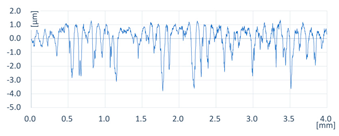 | 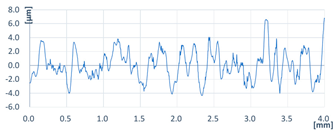 |
| f2 = 0.2 | 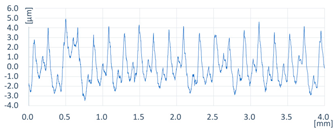 | 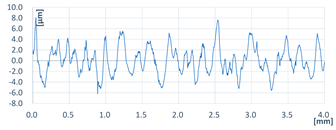 | |
| f3 = 0.32 |  | 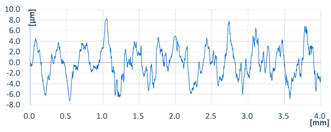 | |
| f4 = 0.4 |  | 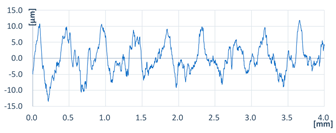 | |
| f5 = 0.6 | 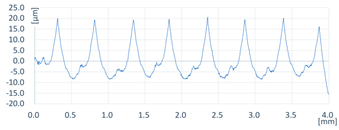 |  | |
| S5 Galvanized by immersion + centrifugation | f1 = 0.14 |  |  |
| f2 = 0.2 | 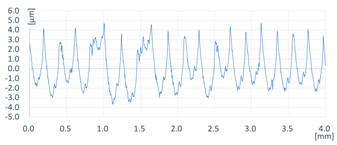 |  | |
| f3 = 0.32 | 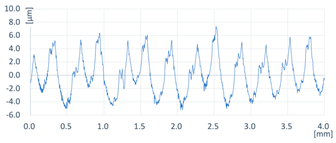 | 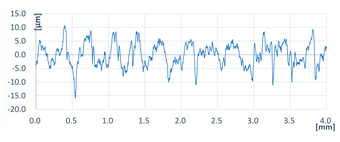 | |
| f4 = 0.4 |  | 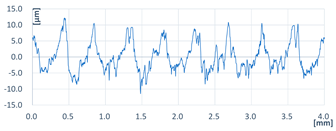 | |
| f5 = 0.6 | 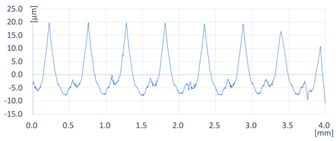 | 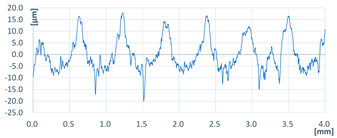 |
| No. Hours | The Technology | Part | |||||
|---|---|---|---|---|---|---|---|
| Fixation | Section 1 | Section 2 | Section 3 | Section 4 | Section 5 | ||
| 0 h | Dip galvanizing |  | |||||
| Galvanizing + centrifugation |  | ||||||
| Electrolytic galvanizing |  | ||||||
| 24 h | Dip galvanizing |  | |||||
| Galvanizing + centrifugation |  | ||||||
| Electrolytic galvanizing |  | ||||||
| 96 h | Dip galvanizing |  | |||||
| Galvanizing + centrifugation |  | ||||||
| Electrolytic galvanizing |  | ||||||
| 168 h | Dip galvanizing |  | |||||
| Galvanizing + centrifugation |  | ||||||
| Electrolytic galvanizing |  | ||||||
| 240 h | Dip galvanizing |  | |||||
| Galvanizing + centrifugation |  | ||||||
| Electrolytic galvanizing |  | ||||||
| Galvanizing Technology | Initial Roughness/Advance Ra (μm)/Feed (mm/rot) | The Surface of the Piece | Zinc Layer |
|---|---|---|---|
| HDG | Ra = 0.435 μm f1 = 0.14 mm/rot |  |  |
| Ra = 6.323 μm f5 = 0.6 mm/rot | 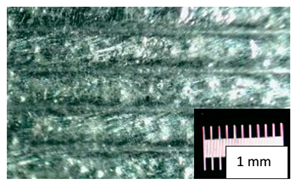 | 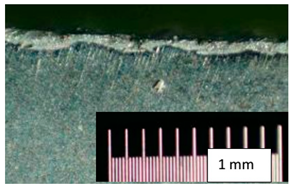 | |
| HDG+C | Ra = 0.435 μm f1 = 0.14 mm/rot |  | 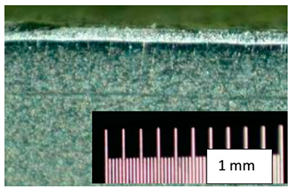 |
| Ra = 6.323 μm f5 = 0.6 mm/rot | 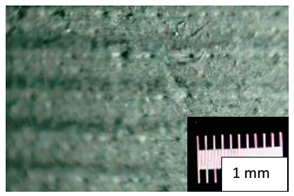 | 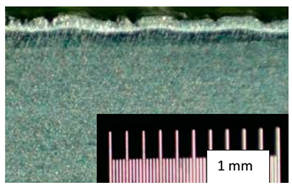 | |
| ZP | Ra = 0.435 μm f1 = 0.14 mm/rot | 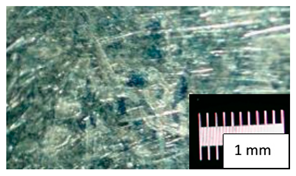 | 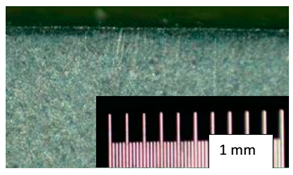 |
| Ra = 6.323 μm f5 = 0.6 mm/rot | 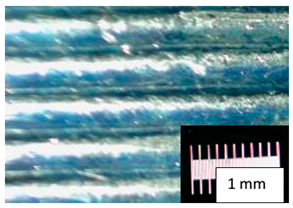 | 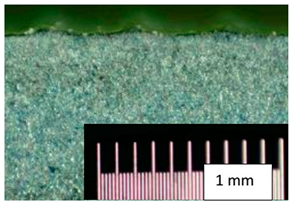 |
Disclaimer/Publisher’s Note: The statements, opinions and data contained in all publications are solely those of the individual author(s) and contributor(s) and not of MDPI and/or the editor(s). MDPI and/or the editor(s) disclaim responsibility for any injury to people or property resulting from any ideas, methods, instructions or products referred to in the content. |
© 2023 by the authors. Licensee MDPI, Basel, Switzerland. This article is an open access article distributed under the terms and conditions of the Creative Commons Attribution (CC BY) license (https://creativecommons.org/licenses/by/4.0/).
Share and Cite
Ravai-Nagy, S.; Titu, A.M.; Pop, A.B. The Influence of Galvanizing on the Surface Quality and Part Precision of S235J0 Alloy Machined by Turning. Coatings 2023, 13, 701. https://doi.org/10.3390/coatings13040701
Ravai-Nagy S, Titu AM, Pop AB. The Influence of Galvanizing on the Surface Quality and Part Precision of S235J0 Alloy Machined by Turning. Coatings. 2023; 13(4):701. https://doi.org/10.3390/coatings13040701
Chicago/Turabian StyleRavai-Nagy, Sandor, Aurel Mihail Titu, and Alina Bianca Pop. 2023. "The Influence of Galvanizing on the Surface Quality and Part Precision of S235J0 Alloy Machined by Turning" Coatings 13, no. 4: 701. https://doi.org/10.3390/coatings13040701








